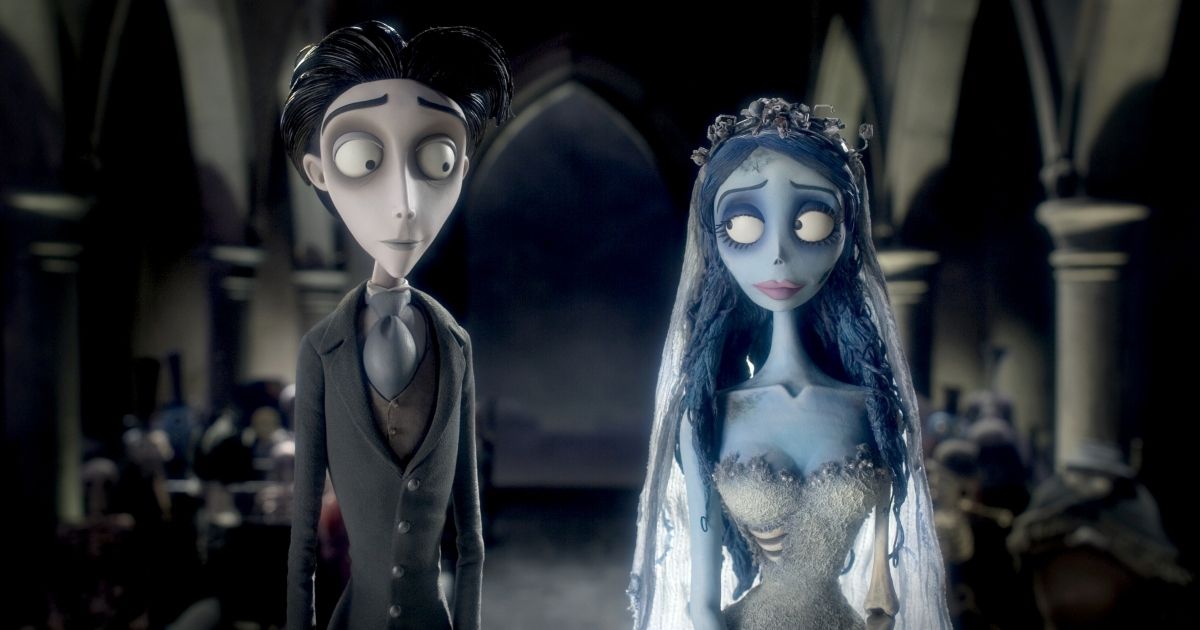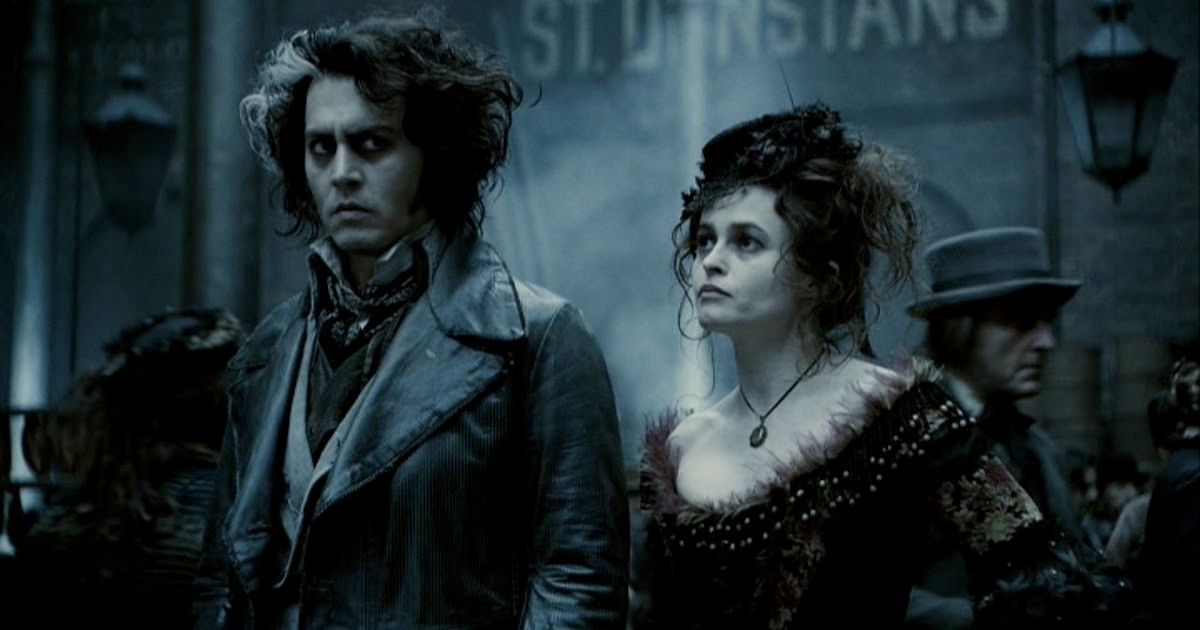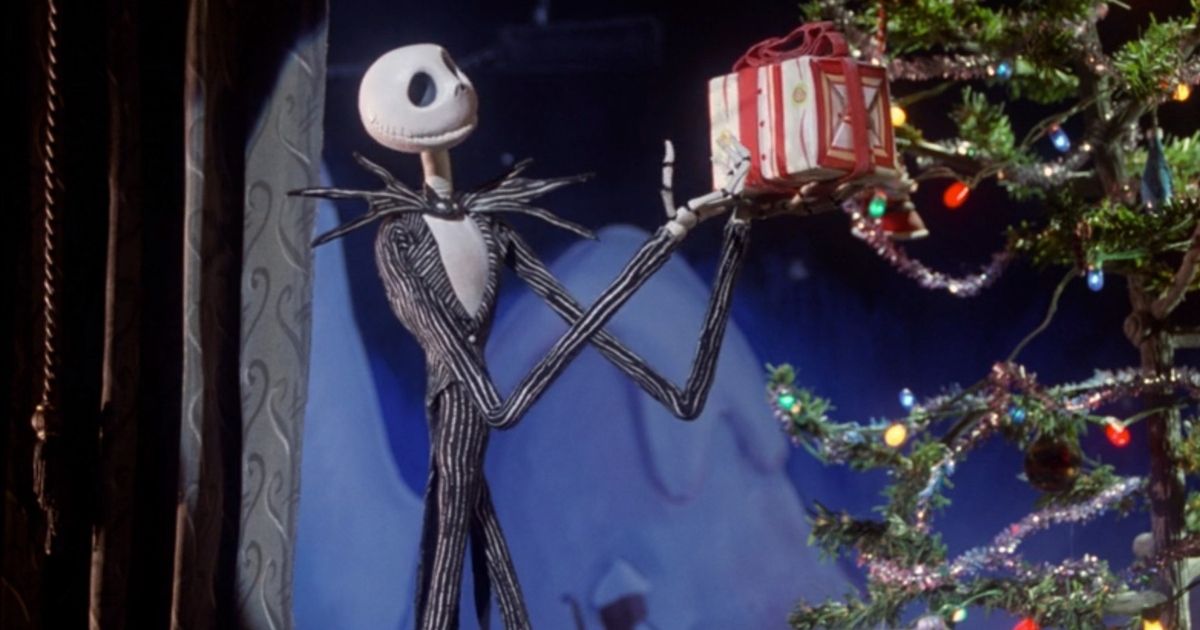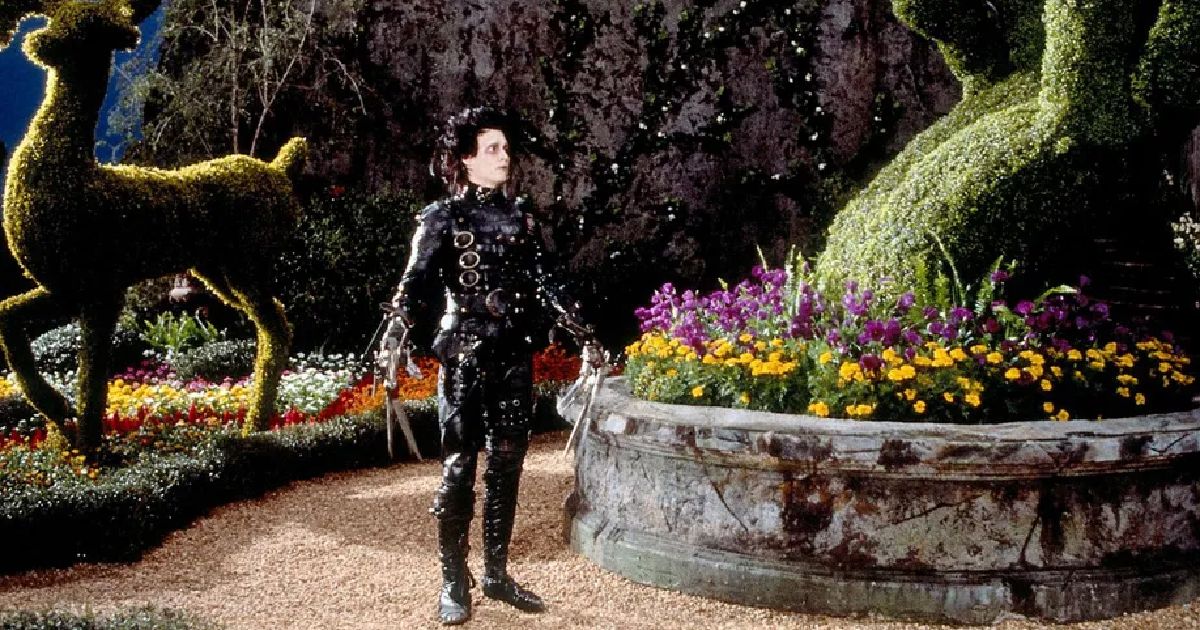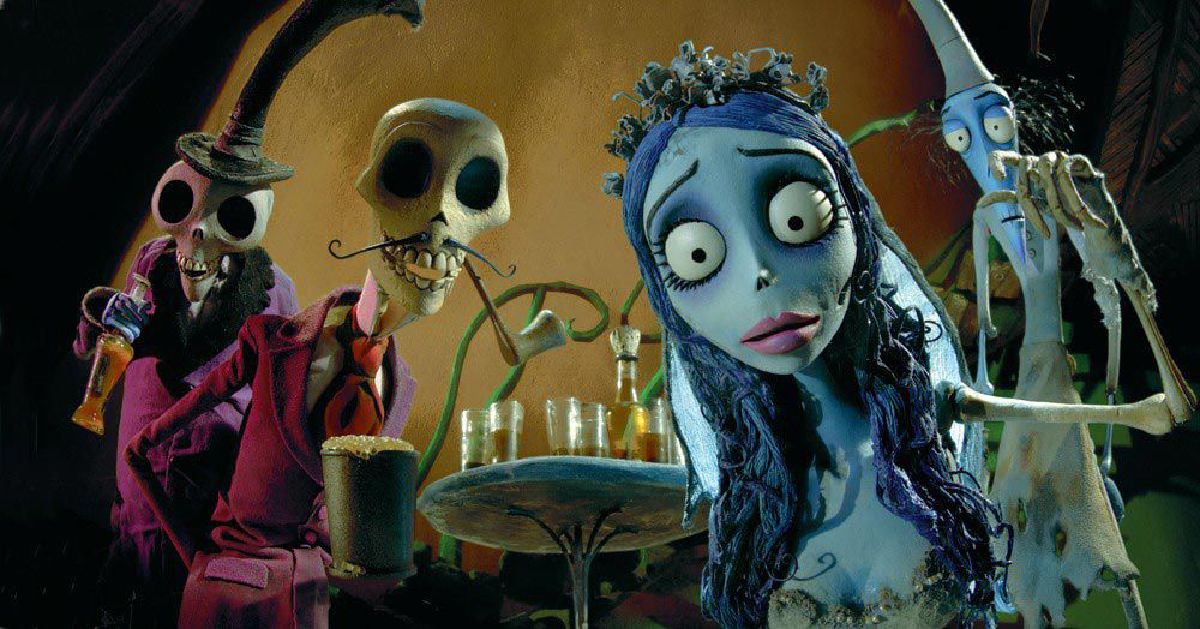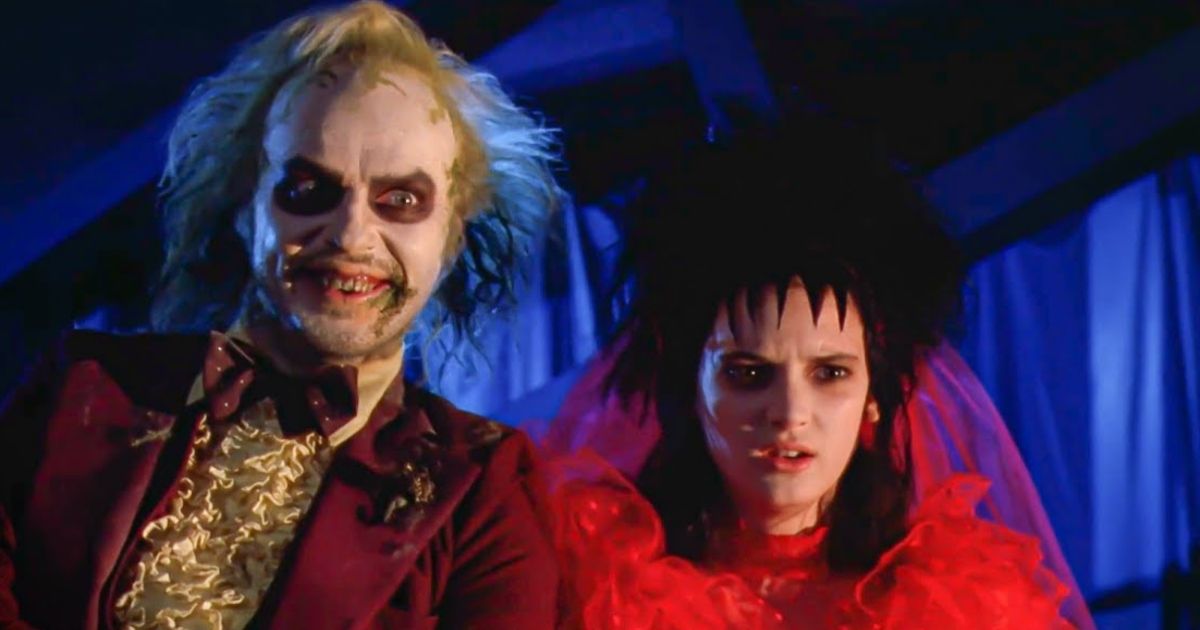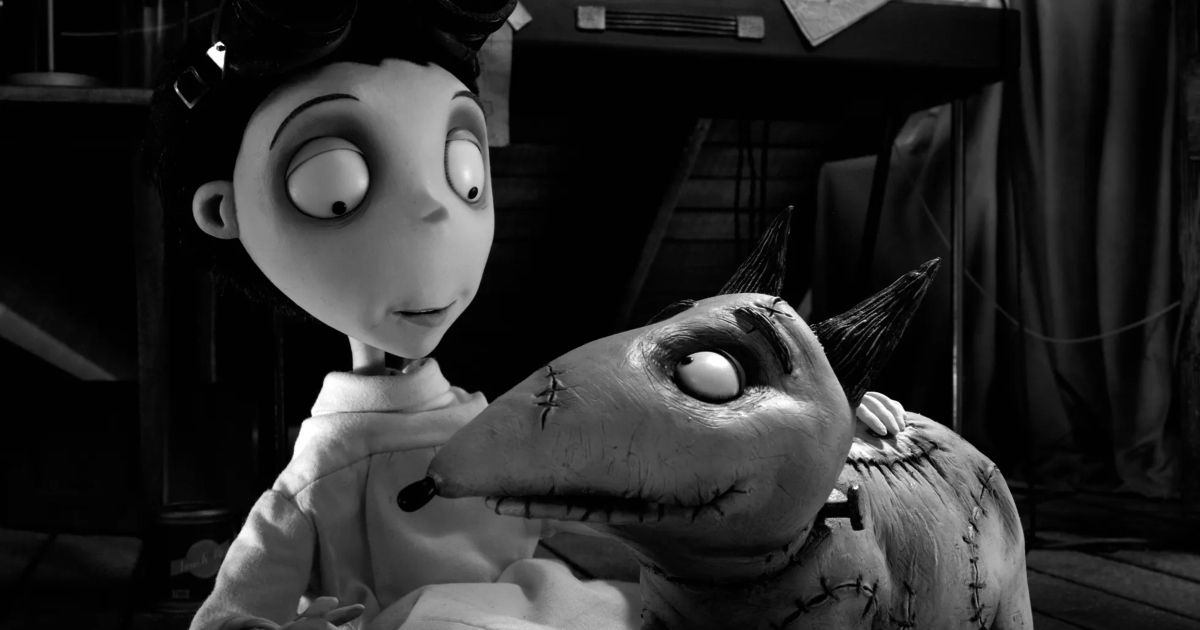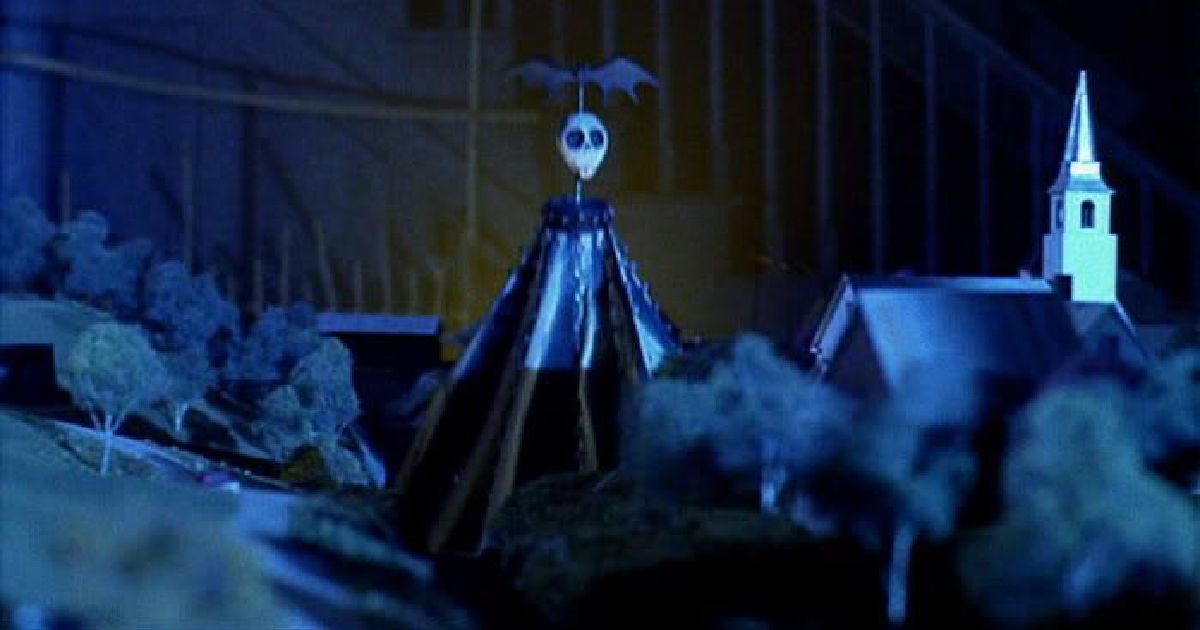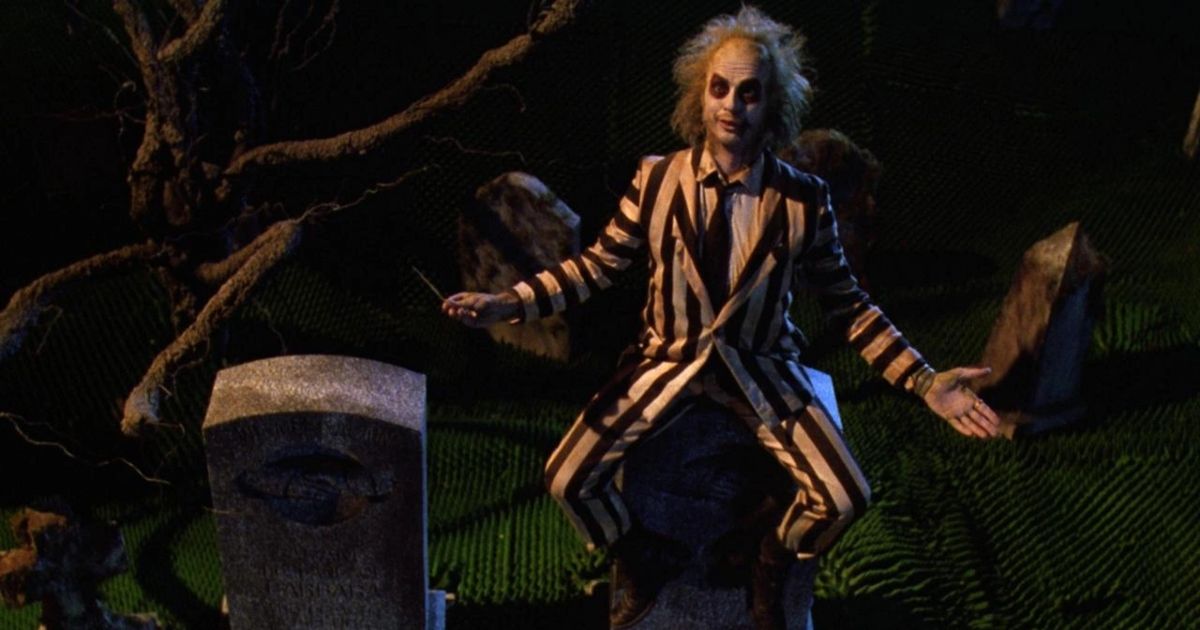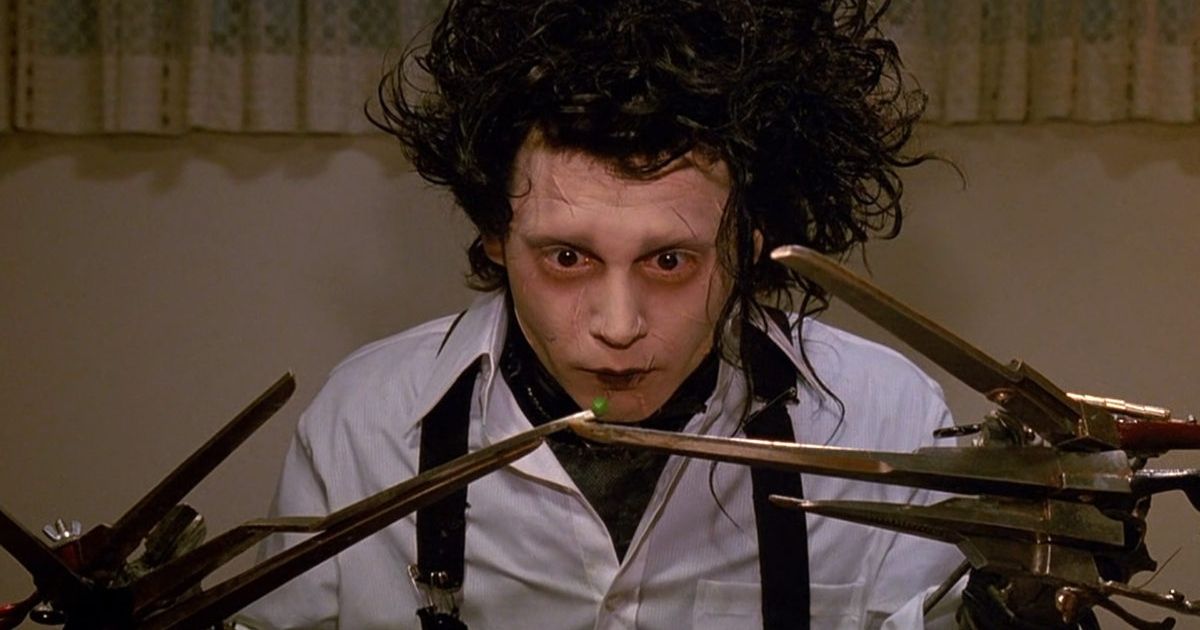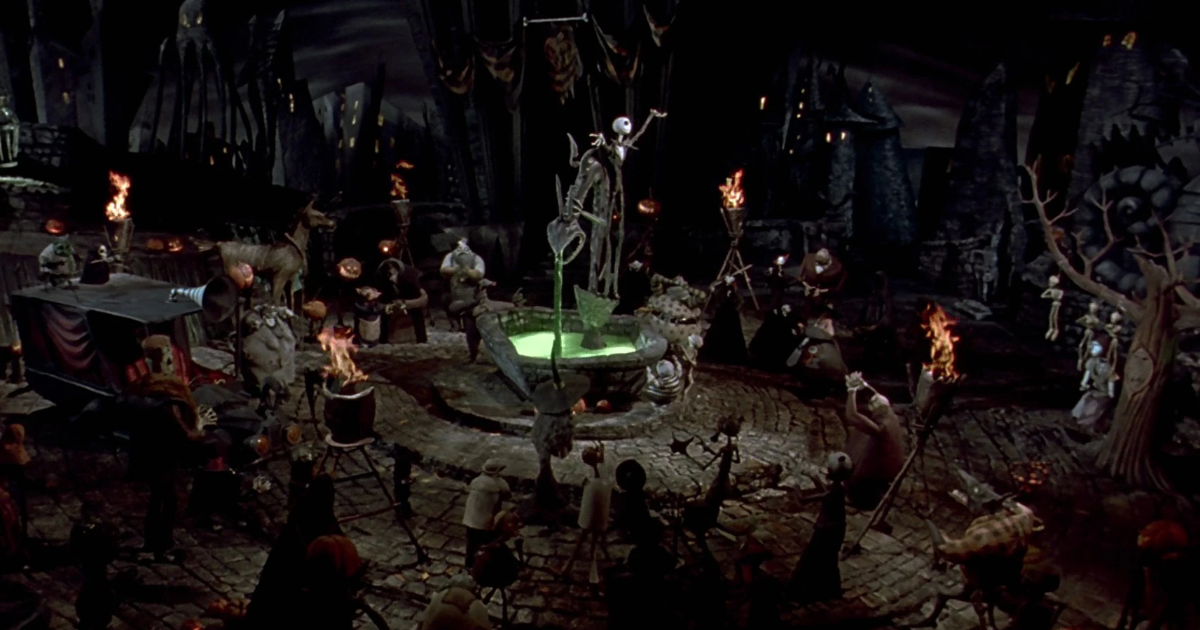Tim Burton is a visionary filmmaker known for his distinct and unmistakable style. From whimsical, gothic settings to eccentric characters, his films have captured the imagination of audiences worldwide.
After many years and projects, some traits are recognizable in most of his work, making his style unique and loved by many fans. The director, who started working with animation, now has such a distinctive style that many like to call "Burton-esque." From the eerie streets of Halloween Town in The Nightmare Before Christmas (1993) to the gothic school of Nevermore in Wednesday (2022), let's explore the characteristics that make Burton's worlds come to life on screens.
10 Macabre Visual Aesthetic
Burton creates a visually stunning and hauntingly beautiful world that is uniquely his own. From the twisted architecture that forms eerie landscapes, his films are filled with a sense of darkness and unease that captivates audiences. The sets are often adorned with intricate patterns, dark and dramatic colour schemes, and visual cues that create a sense of mystery.
Most of his characters are pale, like Edward Scissorhands, Betelgeuse, or Sweeney Todd. Technically, he often employs low-key lighting techniques, creating shadows and contrasts that add depth to his scenes, like the fogged streets in Sweeney Todd: The Demon Barber of Fleet Street (2007) or the rooms in Corpse Bride; the lighting choices immerse viewers in the macabre atmosphere.
9 Stop Motion Animation
Another trait that we see in his projects, especially taking into account that he started working with animation, is his love for stop-motion animation. With a lot of creativity and attention to detail, he has made movie classics like The Nightmare Before Christmas (1993), where every character, set piece and prop is carefully designed and meticulously crafted by skilled animators and artisans. The level of detail in these creations is remarkable, from the intricate facial expressions of the characters to the finely textured surfaces of the miniature worlds they inhabit.
The slight imperfections and visible handiwork give the animations a sense of authenticity that sets the rhythm and pacing of his films, reinforcing the fantastical nature of the stories being told. This unique visual language adds to Burton's films' overall charm and appeal, making them instantly recognizable and beloved by audiences.
8 Influenced by Expressionism
Tim Burton's visual style is often influenced by the artistic movement known as expressionism. Expressionism emerged in the early 20th century as a reaction to the realism of the time, focusing on expressing emotions and subjective experiences through distorted and exaggerated forms. One of the key aspects of expressionism that is evident in Burton's films is the use of exaggerated and stylized visuals, both using colour and form. His characters, sets, and environments often feature distorted proportions, elongated shapes, and surreal designs. Whether it's the elongated limbs of Jack Skellington or Edward Scissorhands' mansion's twisted and gothic architecture, his films often embrace the exaggerated and unconventional, much like the art movement.
Another prominent feature is the exploration of themes like isolation, alienation, and inner turmoil. This exploration of individuality and the darker aspects of human nature aligns with the emotional and psychological themes that expressionism tried to convey.
7 The Day of the Dead
Various cultural traditions, including the vibrant and colorful celebrations of the Day of the Dead have influenced Tim Burton's distinctive visual style. The Day of the Dead, or Día de los Muertos, is a Mexican holiday that honors and celebrates deceased loved ones. This festive and lively tradition has had a significant impact on Burton's artistic sensibilities, especially on many characters that have a cadaveric appearance, particularly in Corpse Bride or even in some scenes with the ghosts in Beetlejuice (1988).
Another aspect of the holiday in his work is its celebration of life and death as intertwined concepts. In the Day of the Dead tradition, death is not viewed as a somber or fearful event but rather as a natural part of the cycle of life. This theme resonates strongly in Burton's storytelling, as many of his characters navigate the duality of existence, usually with characters that come back to life.
6 Colors Contrast
Inspired by a gothic aesthetic, most of his characters wear costumes and are often in a world with a muted colour palette. One of the things that Burton likes to do is to put these characters in contrast with colorful elements, usually as a visual cue to place them out of that world, especially if those elements come from the world that the main character is starting to know during his adventure as the movie progresses.
One clear example is in Sweeney Todd, when Mrs. Lovett is singing and imagining a life married to Todd, and they move By The Sea (as she sings this song) and live a romantic life. Her clothes in bright in that scene, whilst his are grey-ish and totally the opposite of hers. Another example is the wedding dress that Lydia uses in Beetlejuice, and Beetle's green hair, contrasting to his black and white striped suit.
5 Characters with Big Eyes
Tim Burton's distinctive artistic style often includes characters with big eyes, a visual trademark that serves multiple purposes. First and foremost, it creates a sense of innocence and vulnerability. The large, wide-set eyes evoke a childlike quality, conveying a sense of wonder and curiosity. This innocence often contrasts with the dark and sometimes macabre worlds in which the stories take place.Furthermore, the exaggerated size of the eyes allows for enhanced expressiveness. The eyes become a focal point, conveying a wide range of emotions and providing a window into the characters' souls that helps to establish a connection between the audience and the characters, drawing us into their world and matching with the Gothic appearance the director likes so much.
4 Hidden Jack Skellingtons
We have already discussed some of the recurring themes in Burton's work, but there is one particular hidden gem that fans often enjoy discovering in his projects. If you look closely, it is quite possible that you will find several cameos of Jack Skellington, a nod to one of his most beloved characters. One example can be found in Beetlejuice (1988). During the infamous dinner scene, as the characters perform the dance routine to Harry Belafonte's "Day-O (The Banana Boat Song)," keen-eyed viewers can catch a glimpse of Jack Skellington's familiar face among the collection of characters at the table.
Another is in the film James and the Giant Peach (1996), which Burton produced. As James and his insect companions journey through various dangers, a blink-and-you'll-miss-it moment reveals a cloud formation in the shape of Jack Skellington's face. These hidden appearances serve as a treat for fans who appreciate the interconnectedness of Burton's work and the enduring legacy of his iconic characters.
3 Stripes
Another trademark of Tim Burton's projects is that his characters and sometimes even the scenery's visuals have many stripes. Think of Michael Keaton's Betelgeuse with a memorable black-and-white vertically striped suit. The bold stripes not only make Betelgeuse visually striking but also reflect his chaotic and mischievous nature.
Another iconic use of stripes in his work is with Jack Skellington's pinstriped suit or even in Corpse Bride, where the bride herself is adorned with a dress featuring horizontal stripes in various shades of blue. Beyond specific films, stripes also appear in wallpapers and other promotional materials, speaking with the aesthetic he built for his works.
2 Eccentric Characters
One of the last characteristics in common that we can find throughout Burton's filmography is the vast number of distinct and eccentric characters, usually his protagonists. Think of names such as Edward Scissorhands, played by Johnny Depp. The first is a gentle and artistic soul with scissors for hands, and even though his appearance might set him apart from the surrounding society, his heart and artistic talent make him a compelling and sympathetic protagonist.
Or Sweeney Todd, blinded by revenge because of what Judge Turpin did to his family. Or even Wednesday (2022), the latest Addams Family adaptation. The whole motif of the family is that they're almost the opposite of what you would expect from a conventional family, the kids with peculiar tastes and a mind open for the macabre and darkness.
1 Danny Elfman
The creative collaboration between Tim Burton and composer Danny Elfman has become one of the most enduring partnerships in the world of filmmaking. Together, they have crafted a unique and unmistakable audiovisual aesthetic that has become one of the marks of Burton's projects.
Beginning with Pee-wee's Big Adventure (1985), their work complemented each other. It was extremely positive, thanks to Elfman's ability to capture the essence of Burton's visual storytelling through his music in the form of hauntingly beautiful melodies, whimsical orchestrations, and a touch of melancholy. Some became classical, such as This is Halloween, and will definitely impact future movie fans in the years to come, just as it did with people worldwide.

